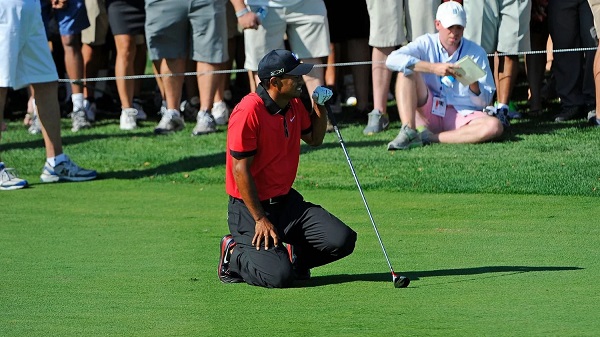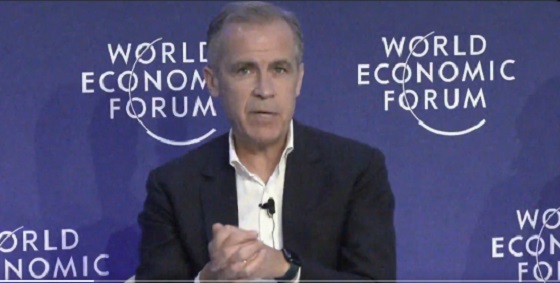News
Winning the Canadian Derby would be a boyhood dream for thoroughbred owner Ole Nielsen

Written by Curtis Stock
The Canadian Derby has and always will be the stuff of dreams. Just ask thoroughbred owner Ole Nielsen who won Saturday’s allowance race at Century Mile with favoured Vancouver invader Explode to move squarely into the forefront of the $250,000 August 18th Derby.
“Winning the Canadian Derby would be a boyhood dream,” said Nielsen after his charge Explode got up in the final strides over a bowl of mud and the wind blowing the starched flags sideways having just enough to get past a very game filly Im Evin Im Leavin to win by half a length.
Sharp Dressed Beau, the 3-1 second choice in the wagering who had three straight wins coming into the race, was another length and a half back in third.
“I’m an Edmonton boy. I was raised here,” said Nielsen, who now lives in Vancouver. “I went to the University of Alberta and then moved to Vancouver to go to the University of British Columbia. I remember picking up empty pop bottles so that I could have enough money to bet $2 to win, place and show on a horse at Northlands. And when I was a little older I remember betting $100 to win on Chariot Chaser,” he said of the 1965 Derby when Chariot Chaser splashed through a similarly muddy track coming from 21 lengths back with Sandy Shields in the irons to run down Vancouver’s Weedbender.
Chariot Chaser paid $26.00 to win that day. “I had more than enough money to buy a train ticket to Vancouver for a nice holiday trip. Now I’m not going to say Explode is going to win the Derby – too many things can happen and you don’t know who else is going to show up – but he will get the distance; he’ll run all day.”
The Derby is 10 furlongs. Saturday’s allowance race was nine furlongs. But Nielsen is probably correct that Explode will handle the extra eighth of a mile. That was in full evidence on Saturday when he overcame his outside 10th post position, raced four wide around the first turn and then five wide down the backstretch before unleashing his move.
After the wire winning jockey Amadeo Perez had Explode gallop out another eighth of a mile which he accomplished with aplomb.
It was also in full evidence back in Vancouver at Hastings Park when he won his last two stakes starts by a combined total of 10 1/2 lengths – first going six-and-a-half furlongs when he came from last place and then the mile and a sixteenth Chris Loseth when he stalked the early pace and then fluidly drew away by half a dozen lengths.
“I felt good about (Saturday’s race) but he gave me some anxious moments down the stretch gawking around here and there – something he absolutely doesn’t do in Vancouver – and then jumping the tire tracks left by the starting gate,” said Nielsen, who runs a breeding operation in Vancouver.
“I was shocked the way he ran down the lane. But he got the job done. And that filly…,” Nielsen said of Im Evin Im Leavin. “Boy she ran a huge race. That’s some filly. Amadeo had to ask him at the end to go. Fortunately he did.”
The victory was Explodes third in a row and fifth in his last six starts. The only blemish – a small one – came when he simply ran out of real estate and finished second in the Jim Coleman Province stakes missing by three-quarters of a length to Dr John after being 10th during the early going in the six-and-a-half furlong dash.
“After he won the Ascot Graduation and was named champion two-year-old in B.C. I said at the Awards Dinner that I’d had quite a few good horses over the years and it’s hard to convince me that they are good horses,” recalled Nielsen, who said he has been a “horse nut” all his life winning his first race way back in 1971. “But I said ‘This might be a good one.'”
For sure. “As I said at the dinner I’ve had several good horses,” he said mentioning horses like Winmor Miss that he owned with with Jim Sapara who beat the boys including highly regarded Rockcliffe in the Alberta Derby and Monashee who won over $800,000.
“Monashee won three races in Edmonton. I really liked sending her to Alberta when my mom and dad and my sister were still alive and lived here. It was a lot of fun.”
Nielsen bought Explode as a weanling in Kentucky and then put him into the B.C. Yearling Sale. “We’re short of horses in Vancouver so I bought six weanlings and ran them all through the B.C. sale as yearlings. I had a $15,000 reserve bid on Explode which I thought was fair but nobody put up their hand,” said Nielsen adding that he wound up selling only one of those six weanlings. Luckily Explode was one of the ones I kept. I’m very, very happy with him.”
“He only arrived in Edmonton (on Friday). Mark (trainer Cloutier) brought him out here with Harold Barroby’s son, Trapper, in Harold’s rig. It was a new spot for him. He was a bit nervous in the paddock and it wasn’t a very nice bloody day. The experience will do him good. That was one tough race. In my opinion these were better horses than he was running against in Vancouver.”
“It should set him up nicely for the next one,” said Nielsen, with ‘the next one’ of course being the Canadian Derby. “We were going to stay in Vancouver and run him on Aug. 5. But it made more sense to come here if you are trying to get the big prize. We’ll see how smart we are in three weeks.”
Nielsen was glad to hear that Im Evin Im Leavin isn’t going to run in the Derby with trainer Greg Tracy and the filly’s owners Wayne Bakke, Nathan Hoines and Jodee Hoovestal opting instead to run her in the $100,000 Century Casinos Oaks the day before the Derby.
While most people were surprised with Im Evin Im Leavin’s inspired performance while being sent away at 20-1 Tracy wasn’t.
“In her last start she rattled the starting gate and had blood running down her forehead. I mean she literally shook the whole gate,” said Tracy of a race where she ended up third defeated by nine-and-a-half lengths.
“Prayven (jockey Badrie) also lost his whip when she acted up in the gate.” If you threw that race out, you’ll see that Im Evin Im Leavin had won her previous three starts – two in New Mexico and the other at Century Mile – in most convincing fashion. Furthermore, in Im Evin Im Leavin’s last start of 2018 she finished second to B.C. powerhouse Summerland, who has won eight of her nine career starts.
Tracy will probably run Flatout Winner in the Derby. Fifth on Saturday he could be a live longshot. Bumped hard leaving the starting gate, he lost several lengths at the break, made a good wide move down the backstretch before being taken back to the rail where he flattened out. Moved off the rail again he started to run again.
“I think he’ll get a lot from this race,” said Tracy. “He just shipped in (from Churchill Downs in Kentucky) before the race. I think he’ll be a different horse in the Derby.”
STOCK REPORT – In other Derby news trainer Robertino Diodoro is looking at sending two horses to Edmonton for the Grade 3 race.
Diodoro, who has won the last two Canadian Derbies and four of the last six – although, amazingly, the verdict of the 2017 Derby which was won by Chief Know It All is still tied up in the courts – intends on sending both Señor Friday and Miltontown to Edmonton on Thursday. Senor Friday has won at Prairie Meadows, Canterbury Downs and in Phoenix. He’s owned by Charlie Garvey.
Miltontown, who was claimed for $50,000 is owned by the same connections that won last year’s Derby with Sky Promise: Rick and Clayton Wiest, Tim Rollingson and Norman Tremblay. “Miltontown’s last race was in the Iowa Derby but I think you can throw that race in the garbage. He got a terrible trip. It was a speed-biased track and he was trapped behind horses.”
Asked if he thought he could win the Derby with either of them Diodoro said “Both are doing well. If I didn’t think they could win they wouldn’t be coming to Alberta.”
[email protected]
Follow Curtis on Twitter at CurtisJStock
The Canadian Derby is hosted by Century Mile Racetrack and Casino. They offer many options to enjoy the 90th running of this classic.
- Tables of four (4) or six (6) in our Finish Line Restaurant.
- Tables of four (4) in our private Paddock Room wagering area.
- VIP Tents – The Spangled Jimmy Tent and Sky Promise Tents located next to the racetrack, South of the Century Mile building.
- Executive Cabanas for twenty (20) located directly on the apron along the East side of the Century Mile building (18+ area).
- Outdoor, open grandstand seating.
- Outdoor beer gardens (18+ area).
Additional notes:
- Casino is open from 9:30 am to 3:00 am. Slot machines activate at 10:00 am. The Casino is age restricted to 18 years of age or greater.
- Main Apron along the racetrack will be fully open and accessible to all ages (no cost for attending on the Apron, outside of ticketed areas).
- There is no infield seating options this year due to the grass in that area still establishing itself.
- Food and beverage options will be sold throughout the venue. Outside food and beverage not permitted.
- Free on site parking and free shuttles from Premium Outlet Collection mall will be available.
Click here to learn more about the Canadian Derby.
Business
CBC uses tax dollars to hire more bureaucrats, fewer journalists
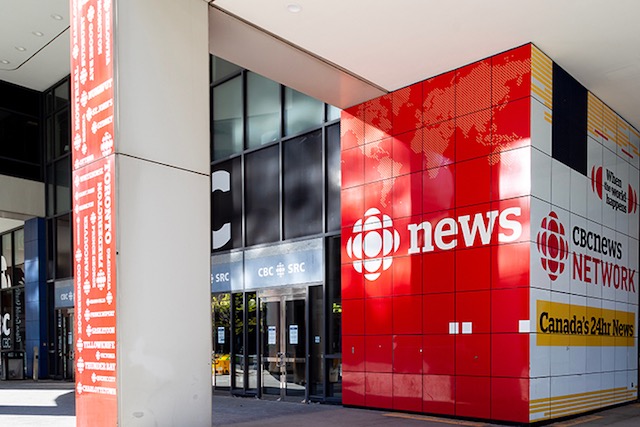
By Jen Hodgson
The Canadian Broadcasting Corporation is using taxpayer money to pad its bureaucracy, while reducing the number of journalists on staff, according to access-to-information records obtained by the Canadian Taxpayers Federation.
“CBC defends its very existence based on its journalism, but its number of journalists are going down while its bureaucracy keeps getting bigger and taxpayer costs keeps going up,” said Franco Terrazzano, CTF Federal Director. “Why does the government keep giving CBC more taxpayer money if barely anyone is watching and its number of journalists keeps going down?”
The CBC employed 745 staff with “journalist” or “reporter” in their job title in 2021. That number dropped to 649 by 2025, the records obtained by the CTF show. Of the 6,100 total employees disclosed by the records, just 11 per cent of CBC staff had “journalist” or “reporter” as their job title in 2025, according to the records.
Even journalist roles such as editors, producers and hosts declined between 2021 and 2025.
While the number of journalists employed by the state broadcaster fell, the number of other bureaucrats grew. The total number of CBC management positions increased to 949 in 2025, up from 935 in 2021.
Bureaucratic roles such as “administrators,” “advisors,” “analysts” and sales staff all increased steadily during the same period.
Management positions saw the steepest growth, with titles like “national director,” “project lead,” “senior manager” and “supervisor” leading the surge.
These trends undermine the CBC’s long-standing claim that its frontline journalism justifies its existence. Despite bureaucratic bloat and fewer journalism positions, the CBC continues to promote its news coverage as a reason it deserves more than $1 billion in annual taxpayer funding.
Separate access-to-information records obtained by the CTF show further proof of CBC’s bloated bureaucracy.
The CBC has more than 250 directors, 450 managers and 780 producers who are paid more than $100,000 per year.
The CBC also employed 130 advisers, 81 analysts, 120 hosts, 80 project leads, 30 lead architects, 25 supervisors, among other positions, who were paid more than $100,000 last year, according to access-to-information records. The CBC redacted the roles for more than 200 employees.
CBC’s CEO Marie-Philippe Bouchard insists the broadcaster is a “precious public asset” that provides “trustworthy news and information.”
CBC’s previous CEO, Catherine Tait, made similar comments throughout her 6.5-year tenure.
“A Canada without the CBC is a Canada without local news [in some places],” Tait said in 2022. If funding were withheld, there would be “fewer journalists to hold decision-makers at all levels to account.”’
“Local news is absolutely at the core of what we do,” Tait said in a 2020 interview. “Canadians are coming to the CBC in numbers like we’ve never seen before.”
However, CBC News Network only accounts for about 1.8 per cent of TV audience share, according to its own data.
Meanwhile, taxpayer funding to CBC will surpass $1.4 billion this year, according to the federal government’s Main Estimates. The broadcaster has spent about $5.4 billion of taxpayers’ money over the last five years, according to the government of Canada.
Prime Minister Mark Carney claimed “our public broadcaster is underfunded” during the federal election. He pledged an initial $150-million annual funding increase and said that number could rise even higher.
CBC paid out $18.4 million in bonuses in 2024 after it eliminated hundreds of jobs. Following backlash from across the political spectrum, CBC ended its bonuses and handed out record high pay raises costing $37.7 million.
“Taxpayers shouldn’t have to pay for an office full of middle managers pretending to be reporters,” Terrazzano said. “The CBC’s own records prove it has fat to cut and if Carney is serious about saving money, he would force CBC to cut its bureaucratic bloat.
“Or better yet, Carney should defund the CBC.”
Internet
It’s only a matter of time before the government attaches strings to mainstream media subsidies

Misinformation is not exclusive to alternative online news organizations
In a previous world, whether they succeeded or failed at that was really no one’s business, at least provided the publisher wasn’t knowingly spreading false information intended to do harm. That is against the law, as outlined in Section 372 of the Criminal Code, which states:
“Everyone commits an offence who, with intent to injure or alarm a person, conveys information that they know is false, or causes such information to be conveyed by letter or any means of telecommunication.”
Do that, and you can be imprisoned for up to two years.
But if a publisher was simply offering poorly researched, unbalanced journalism, and wave after wave of unchallenged opinion pieces with the ability to pervert the flow of information and leave the public with false or distorted impressions of the world, he or she was free to do so. Freedom of the press and all that.
The broadcasting world has always been different. Licensed by the Canadian Radio-television and Telecommunications Commission (CRTC), content produced there must, according to the Broadcasting Act, be of “high standard”—something that the CRTC ensures through its proxy content regulator, the Canadian Broadcast Standards Council (CBSC).
Its most recent decision, for instance, condemned Sportsnet Ontario for failing to “provide a warning before showing scenes of extraordinary violence” when it broadcast highlights of UFC mixed martial arts competitions during morning weekend hours when children could watch. If you don’t understand how a warning would have prevented whatever trauma the highlights may have caused or how that might apply to the internet, take comfort in the fact that you aren’t alone.
The CRTC now has authority over all video and audio content posted digitally through the Online Streaming Act, and while it has not yet applied CRTC-approved CBSC standards to it, it’s probably only a matter of time before it does.
The same will—in my view—eventually take place regarding text news content. Since it has become a matter of public interest through subsidies, it’s inevitable that “high standard” expectations will be attached to eligibility. In other words, what once was nobody’s business is now everybody’s business. Freedom of the, er, press and all that.

Alberta Premier Danielle Smith
Which raises the point: is the Canadian public well informed by the news industry, and who exactly will be the judge of that now that market forces have been, if not eliminated, at least emasculated?
For instance, as former Opposition leader Preston Manning recently wondered on Substack, how can it be that “62 per cent of Ontarians,” according to a Pollara poll, believe Alberta Premier Danielle Smith to be a separatist?
“The truth is that Premier Smith—whom I’ve known personally for a long time—is not a separatist and has made that clear on numerous occasions to the public, the media, and anyone who asks her,” he wrote.
I, too, have been acquainted for many years with the woman Globe and Mailcolumnist Andrew Coyne likes to call “Premier Loon” and have the same view as Manning, whom I have also known for many years: Smith is not a separatist.
Manning’s theory is that there are three reasons for Ontarians’ disordered view—the first two being ignorance and indifference.
The third and greatest, he wrote, is “misinformation—not so much misinformation transmitted via social media, because it is especially older Ontarians who believe the lie about Smith—but misinformation fed into the minds of Ontarians via the traditional media” which includes CBC, CTV, Global, and “the Toronto-based, legacy print media.”
No doubt, some members of those organizations would protest and claim the former Reform Party leader is the cause of all the trouble.
Such is today’s Canada, where the flying time between Calgary and Toronto is roughly the same as between London and Moscow, and the sense of east-west cultural dislocation is at times similar. As Rudyard Kipling determined, the twain shall never meet “till earth and sky stand presently at God’s great judgment seat.”
This doesn’t mean easterners and westerners can’t get along. Heavens no. But what it does illustrate is that maybe having editorial coverage decisions universally made in Hogtown about Cowtown (the author’s outdated terminology), Halifax, St John’s, Yellowknife, or Prince Rupert isn’t helping national unity. It is ridiculous, when you think about it, that anyone believes a vast nation’s residents could have compatible views when key decisions are limited to those perched six degrees south of the 49th parallel within earshot of Buffalo.
But CTV won’t change. Global can’t. The Globe is a Toronto newspaper, and most Postmedia products have become stripped-down satellites condemned to eternally orbit 365 Bloor Street East.
The CRTC is preoccupied with finding novel ways to subsidize broadcasters to maintain a status quo involving breakfast shows. So we can’t expect any changes there, nor can we from the major publishers.
Which leaves the job to the CBC, whose job it has always been to make sure the twain could meet. That makes it fair to assume Manning will be writing for many years to come about Toronto’s mainstream media and misinformation about the West.
(Peter Menzies is a commentator and consultant on media, Macdonald-Laurier Institute Senior Fellow, a past publisher of the Calgary Herald, a former vice chair of the CRTC and a National Newspaper Award winner.)
-

 Energy2 days ago
Energy2 days agoCAPP calls on federal government to reset energy policy before it’s too late
-
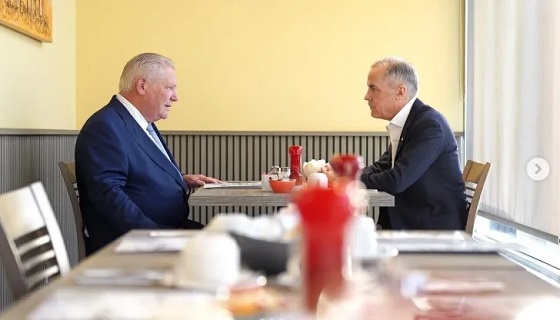
 Business2 days ago
Business2 days agoTrump Raises US Tariffs on Canadian Products by 10% after Doug Ford’s $75,000,000 Ad Campaign
-

 Business2 days ago
Business2 days agoTrans Mountain executive says it’s time to fix the system, expand access, and think like a nation builder
-
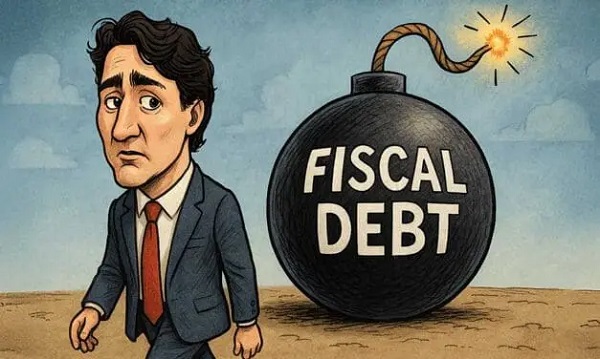
 Business2 days ago
Business2 days agoCanada is still paying the price for Trudeau’s fiscal delusions
-
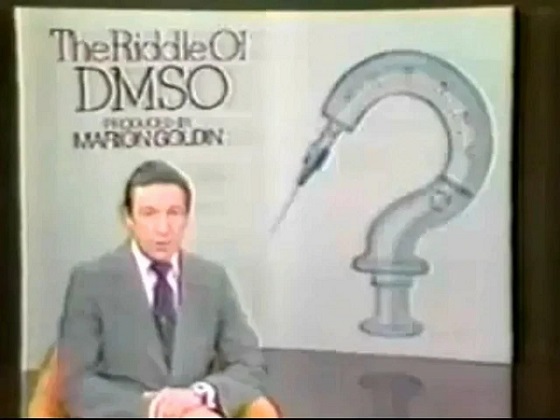
 Health1 day ago
Health1 day agoDMSO Heals the Eyes and Transforms Ophthalmology
-
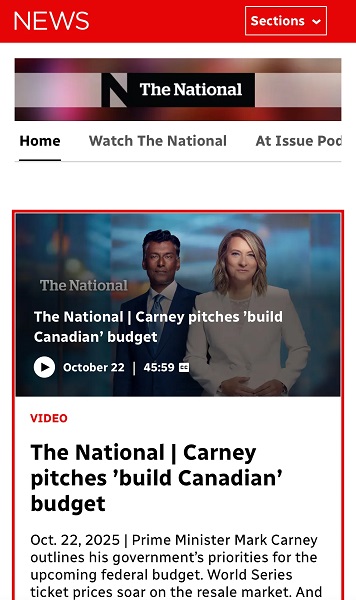
 Media1 day ago
Media1 day agoCarney speech highlights how easily newsrooms are played by politicians announcing the same things over and over again
-

 Opinion1 day ago
Opinion1 day agoCarry-On Carney And The Trials Of Brian Peckford
-
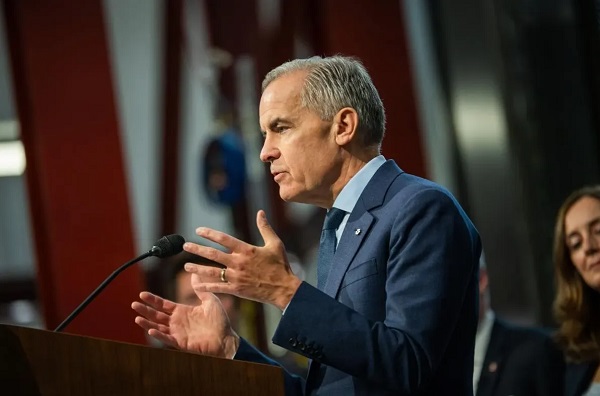
 Opinion1 day ago
Opinion1 day agoA Nation of Announcements: Canada’s Government of Empty Promises









